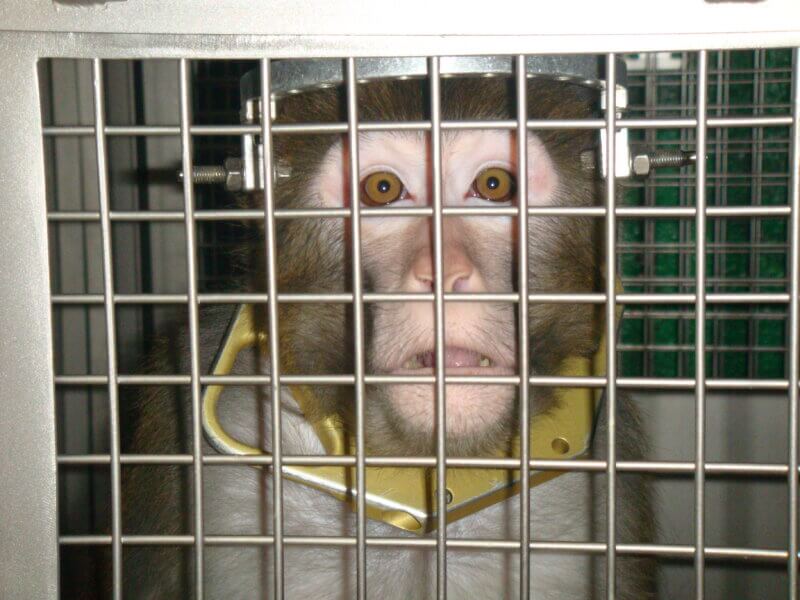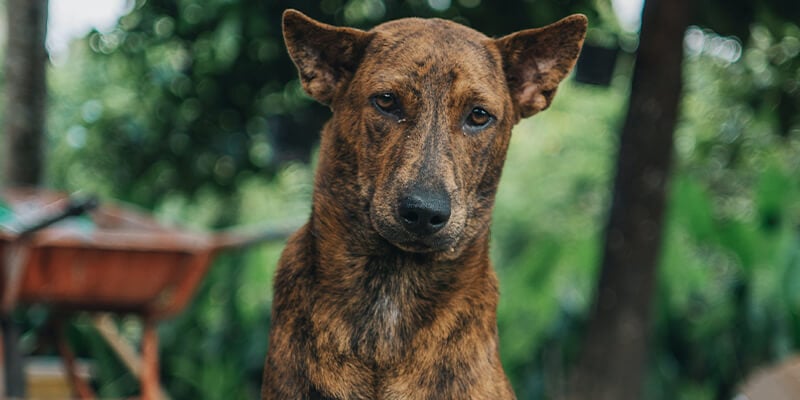Why Researchers Need to Stop Monkeying Around With Vaccine Development!
Sunday, 24 April, was World Week for Animals in Laboratories – a day to commemorate the suffering of millions of animals caged in laboratories around the world.
Among the many species exploited in the name of science, monkeys – mainly macaques and marmosets – are used to potentially develop and test the safety and efficacy of possible human medicines and vaccines. When capturing monkeys in the forest, trappers isolate a troop in a tree and then grab the terrified animals with their hands or using nets and sticks. Many are injured or killed during this violent process. The survivors are crammed into bags or crates and taken on a horrifying journey to laboratories around the globe.
Upon arrival, these highly social animals are put in barren steel cages, in which they barely have enough room to sit, stand, lie down, or turn around. Babies born in laboratories are forcibly separated from their screaming mothers. Many monkeys go insane and even begin to self-mutilate. They are subjected to painful and traumatic procedures: thick gavage tubes are shoved up their nostrils and/or down their throats to pump experimental drugs into their stomachs, electrodes are implanted in their brains, they are exposed to toxic chemicals, and they are given infectious diseases they would never normally contract to test experimental vaccines, among other horrific procedures.
The goal of this exploitation of monkeys is purportedly to find cures for human diseases, but the millions of patients who have waited decades for these treatments to emerge know the heartache of false hope that these experiments engender.
The suitability of monkeys as “biomedical models” has also been overwhelmingly criticised. There are major genetic, physiological, and immunological differences between humans and monkeys that lead to poor translation of experimental results across species, especially regarding vaccine development. Back in the 1940s, Western experimenters told the Indian government that rhesus macaques were needed to develop a polio vaccine. But in fact, the use of macaques slowed the development of the polio vaccine and introduced an unintended monkey virus into it. Countless times, the research community has proclaimed that a malaria, tuberculosis, or HIV vaccine that demonstrated immense potential in monkeys was on the way for humans. But time and again, these monkey-tested vaccines have failed to work in humans and in one case, the test vaccine even increased the likelihood of infection.
In a more recent example, Pfizer, Moderna, and Johnson & Johnson all realised early on that SARS-CoV-2, the pathogen behind the COVID-19 pandemic, did not infect and cause disease in monkeys like it did in humans. The human SARS-CoV-2 virus mutated in monkey tissues, which could have interfered with the vaccine trial process by producing false results.
The Central Drugs Standard Control Organization (CDSCO), the authority responsible for the approval of drugs and vaccines, and other authorities around the world also reduced requirements for toxicity tests on animals, including monkeys, in the development of therapies for COVID-19. Had CDSCO required India’s locally developed COVID-19 vaccine (Covaxin) to follow the normal route of development and approval, we would have been waiting a decade or more for a vaccine.
The global COVID-19 pandemic has revealed how unreliable and unnecessary it is to use monkeys as models of human diseases. This leads us to the crucial question: can we do things differently? The answer is yes, and it is detailed in PETA’s Research Modernisation Deal, which outlines a roadmap and strategy for optimising investment in research to cure disease – by ending funding for strategies that don’t work (experiments on animals) and investing in research that’s relevant to humans.
There are better, more reliable methods that don’t involve animals at all, including human epidemiological studies and in vitro models using human-derived three-dimensional organoids, organs-on-a-chip, and artificial lymph nodes to study immune responses. Advancements in computational modelling and molecular simulations enable analysis and prediction of the properties of viruses. Collectively, these human-relevant models represent the 21st century solution to advancing science and will facilitate the fast and economical development of future vaccines, pharmaceuticals, and therapies.
Monkeys can – and should – be left in their own homes.
Support Us to Help End Experiments on Animals








